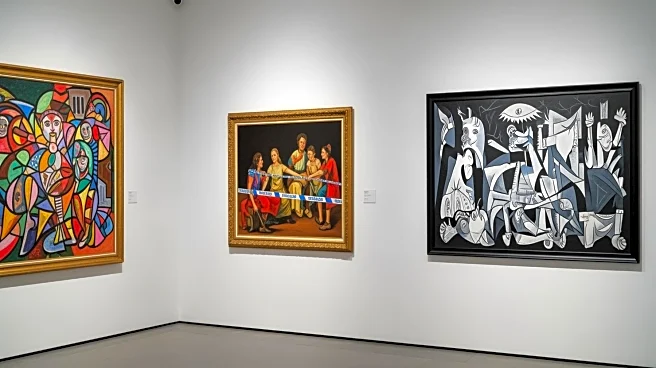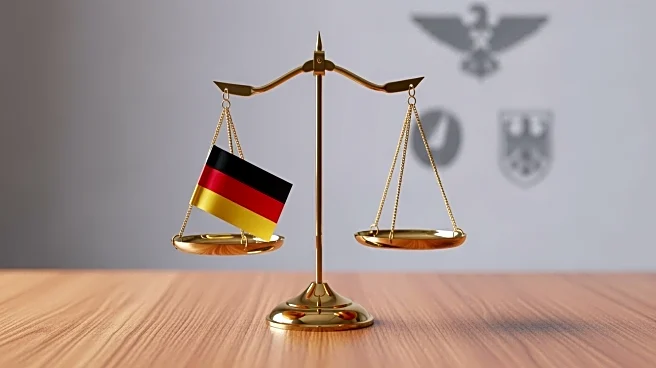What's Happening?
German police have seized millions of euros worth of forged artworks, including pieces falsely attributed to Picasso, Rembrandt, and Kahlo. The operation, which spanned Germany, Switzerland, and Liechtenstein,
led to the arrest of a 77-year-old German man and 10 accomplices on charges of conspiracy and fraud. The investigation began when the suspect attempted to sell two supposed Picasso originals and a Rembrandt painting, which was later identified as a forgery. The coordinated raids uncovered numerous suspected forgeries, along with documents and digital records.
Why It's Important?
This case highlights the ongoing issue of art forgery and its impact on the art market. The seizure of these forgeries prevents them from entering the market and deceiving buyers, protecting the integrity of art transactions. It also underscores the importance of expert verification in art sales and the need for vigilance against fraudulent activities. The operation demonstrates the effectiveness of international cooperation in tackling art crime, as authorities from multiple countries worked together to dismantle the forgery ring.
What's Next?
The investigation is ongoing, with experts set to examine the confiscated paintings to confirm their authenticity. The case may lead to further arrests and charges as authorities continue to unravel the network behind the forgeries. The art community may also see increased efforts to enhance authentication processes and prevent similar incidents in the future.
Beyond the Headlines
The forgery case raises questions about the ethical responsibilities of art dealers and collectors in verifying the authenticity of artworks. It also highlights the challenges faced by law enforcement in combating sophisticated art crime networks. The incident may prompt discussions about the role of technology in improving art authentication and the potential for new tools to aid in the detection of forgeries.












